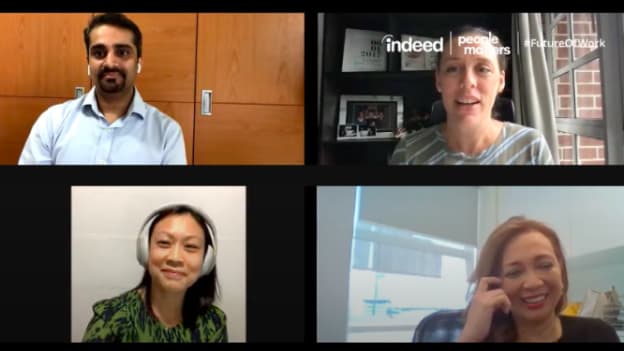Building a diverse workforce for the Future of Work

Diversity in the workplace is more than meeting a quota and ticking the box. It’s no longer something companies aspire to achieve but rather the norm. Many successful companies regard D&I as a source of competitive advantage. For some, it’s a matter of social justice, corporate social responsibility, or even regulatory compliance. For others, it’s essential to their growth strategy.
It makes sense that a diverse and inclusive employee base – with a range of approaches and perspectives – would be more competitive for future work. A small but increasing number of companies have recognized an opportunity to go even further, reframing D&I as an enabler of two of the foremost goals for CEOs: growth and value creation.
As a part of ongoing Future of Work Week, brought to you by People Matters and Indeed, Anish Lalchandani, Head - Talent Global Processes, Standard Chartered Bank, Singapore, Joyce Lee, Employer Branding Lead, Government Technology Agency of Singapore, and Norlida Azmi, Group Chief People Officer, Axiata decoded how organizations need to redesign their hiring strategy to embed diversity and inclusion as a core to their hiring goals.
Here are some key takeaways from the virtual panel discussion where Katie Birch, Senior Director of Sales at Indeed Singapore put forward some challenging questions to Anish, Joyce, and Norlida on building a diverse workforce for the Future of Work.
Technology as an enabler and an inhibitor
With the move toward virtual interviews, hiring managers have to be careful to avoid not only the biases they might encounter during an in-person interview but also a whole new set of potential biases when interviewing someone in their home environment.
While virtual interview tools are powerful enablers, especially in the current climate created by COVID, hiring leaders, HR professionals, and candidates alike must be aware of the potential for subconscious biases in virtual interviews.
“I think that to a great extent, enablement of work from home or work from anywhere has open up opportunities for us to tap into diversity segments, such as persons with disabilities, as well as new parents. On the other hand, it has also created new challenges like the emergence of potential bias in the virtual hiring platform,” shares Joyce.
A compelling and upfront EVP
Talking about the future of work, Norlida shares that the biggest trend in front of us is the evolving work arrangements within an organization– remote, hybrid, on-site, gig, etc. In this scenario, I feel we need an EVP that needs to be articulated in an upfront way; especially our philosophy on sustainability & diversity. Today, hiring is a two-way process, organizations are looking out for talent, and talent is looking out for organizations with a purpose. Further, with the ongoing talent crunch, all the organizations are trying to attract from a common talent pool. Hence, it becomes even more important to work on a compelling EVP.
D&I is not only an HR’s responsibility
In most organizations, people often default to HR to lead the way in support of D&I. While HR plays a significant role in building and structuring a diverse talent pool, they are only one piece of a larger puzzle.
Anish reflected that the most effective approach to hiring that attracts diverse candidates requires a partnership between HR, D&I professionals, the communication team, and other departments.
“You need to look at how do you bring a team of people to start looking at D&I at the process level, at a policy level, and a philosophy level. We've created a working group, which includes members from HR, communications, supply chain, marketing & branding to work together in shaping the right agenda,” shares Anish.
D&I has to have a cross-functional team and it doesn't mean a cross-functional team within HR. Make sure when you build a D&I team in your organization, it has people across different roles and levels. That's how you are going to build the true culture sustainably.
How Indeed is making job search inclusive?
During the session, Katie also reflected on the various initiatives that Indeed has implemented to make job search and hiring more diverse and inclusive.
“With over 250m monthly visitors globally, we focus on the needs of job seekers, a lot. Our site is now available in various languages and our new brand, as well as product guidelines, rolled out hold accessibility as a key theme to ensure that all job seekers and employers have equal access to Indeed’s products and services,” shares Katie.
As the pandemic resets major work trends, HR and talent leaders across Singapore and Southeast Asia need to rethink how business gets done, how people work, and how businesses hire. Join People Matters and Indeed at #FutureOfWork, a week that will give you a preview into how leading organizations are reinventing themselves and HR to shape the future workforce.















